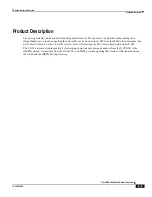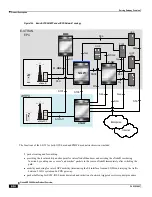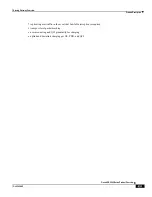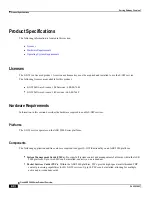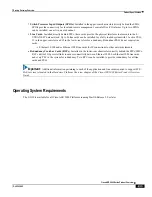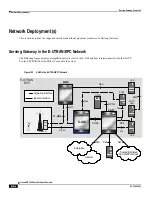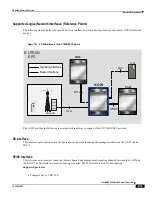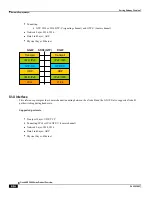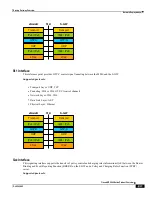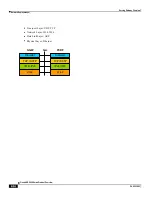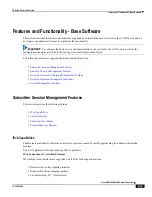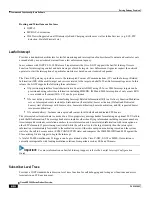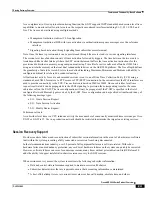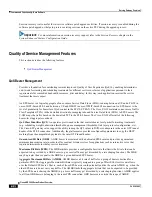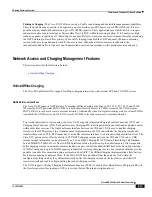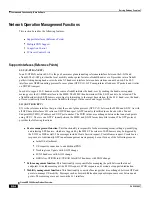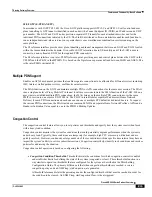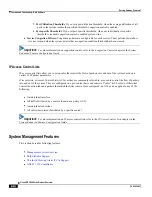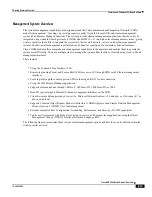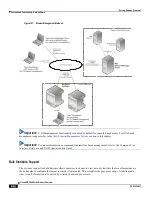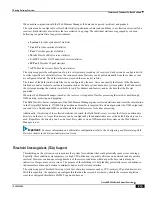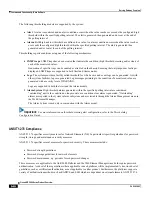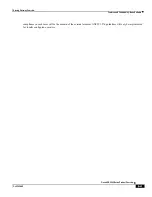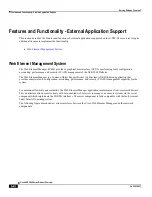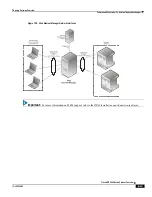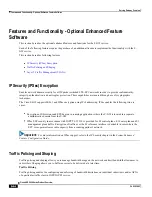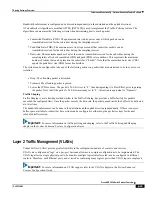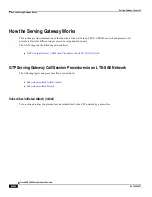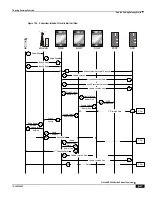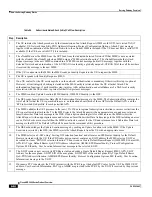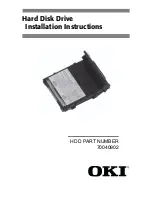
Serving Gateway Overview
Features and Functionality - Base Software ▀
Cisco ASR 5000 Series Product Overview ▄
OL-22938-02
Policing & Shaping
: The Cisco P-GW offers a variety of traffic conditioning and bandwidth management capabilities.
These tools enable usage controls to be applied on a per-subscriber, per-EPS bearer or per-PDN/APN basis. It is also
possible to apply bandwidth controls on a per-APN AMBR capacity. These applications provide the ability to inspect
and maintain state for user sessions or Service Data Flows (SDF's) within them using shallow L3/L4 analysis or high
touch deep packet inspection at L7. Metering of out-of-profile flows or sessions can result in packet discards or reducing
the DSCP marking to Best Effort priority. When traffic shaping is enabled the P-GW enqueues the non-conforming
session to the provisioned memory limit for the user session. When the allocated memory is exhausted, the
inbound/outbound traffic for the user can be transmitted or policed in accordance with operator provisioned policy.
Network Access and Charging Management Features
This section describes the following features:
Online/Offline Charging
The Cisco EPC platforms offer support for offline charging interactions with external OCS and CGF/CDF servers.
Ga/Gz Reference Interfaces
The Cisco P-GW supports 3GPP Release 8 compliant offline charging as defined in TS 32.251,TS 32.297 and 32.298.
Whereas the S-GW generates SGW-CDRs to record subscriber level access to PLMN resources, the P-GW creates
PGW-CDRs to record user access to external networks. Additionally when Gn/Gp interworking with pre-release SGSNs
is enabled, the GGSN service on the P-GW records G-CDRs to record user access to external networks.
To provide subscriber level accounting, the Cisco S-GW supports integrated Charging Transfer Functions (CTF) and
Charging Data Functions (CDF). Each gateway uses Charging-ID's to distinguish between default and dedicated bearers
within subscriber sessions. The Ga/Gz reference interface between the CDF and CGF is used to transfer charging
records via the GTPP protocol. In a standards based implementation, the CGF consolidates the charging records and
transfers them via an FTP/S-FTP connection over the Bm reference interface to a back-end billing mediation server. The
Cisco EPC gateways also offer the ability to FTP/S-FTP charging records between the CDF and CGF server. CDR
records include information such as Record Type, Served IMSI, ChargingID, APN Name, TimeStamp, Call Duration,
Served MSISDN, PLMN-ID, etc. The ASR 5000 platform offers a local directory to enable temporary file storage and
buffer charging records in persistent memory located on a pair of dual redundant RAID hard disks. Each drive includes
147GB of storage and up to 100GB of capacity is dedicated to storing charging records. For increased efficiency it also
possible to enable file compression using protocols such as GZIP. The Offline Charging implementation offers built-in
heart beat monitoring of adjacent CGFs. If the Cisco P-GW have not heard from the neighbor CGF within the
configurable polling interval, they will automatically buffer the charging records on the local drives until the CGF
reactivates itself and is able to begin pulling the cached charging records.
The P-GW supports a Policy Charging Enforcement Function (PCEF) to enable Flow Based Bearer Charging (FBC) via
the Gy reference interface to adjunct OCS servers (See Online Charging description above).
Summary of Contents for ASR 5000 Series
Page 1: ......
Page 26: ......
Page 48: ...New In Release 10 0 SCM Features Cisco ASR 5000 Series Product Overview OL 22938 02 ...
Page 50: ......
Page 58: ......
Page 68: ......
Page 126: ......
Page 138: ......
Page 146: ......
Page 218: ......
Page 236: ......
Page 356: ......
Page 374: ......
Page 422: ......
Page 496: ......
Page 572: ......
Page 654: ......
Page 700: ......
Page 726: ......
Page 784: ......
Page 816: ......
Page 844: ......
Page 906: ......
Page 926: ......
Page 942: ......
Page 943: ...Cisco ASR 5000 Series Product Overview OL 22938 02 Chapter 30 Technical Specifications ...
Page 966: ......
Page 972: ......

